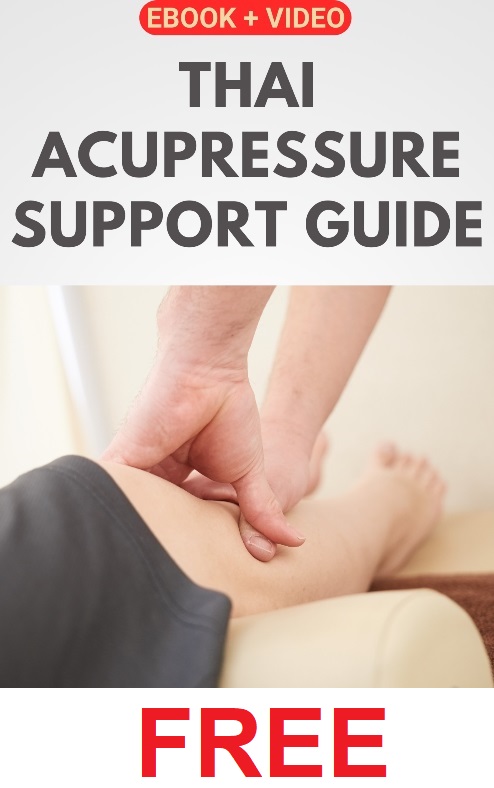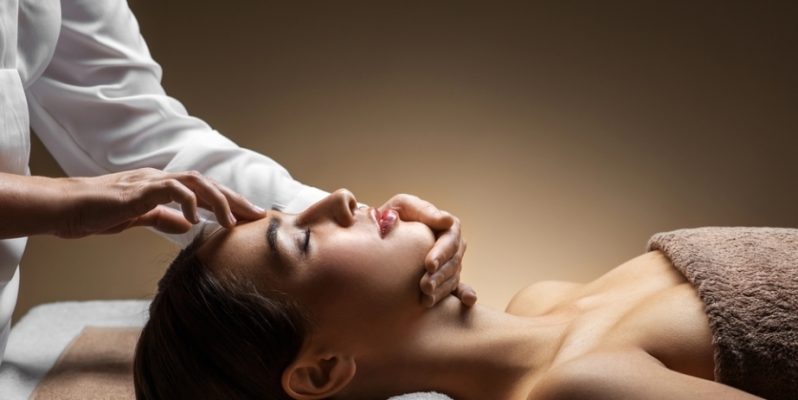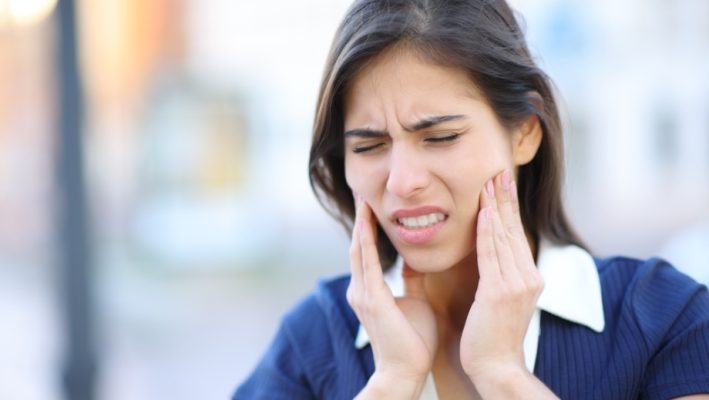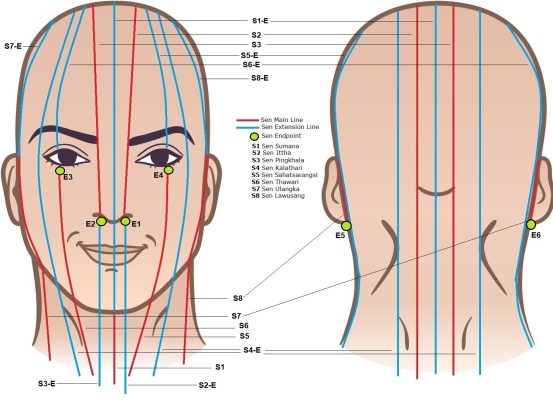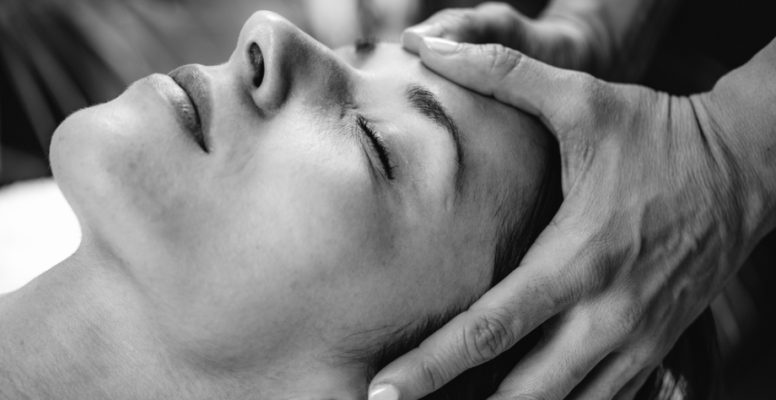
In this post, we’ll discuss the Thai Acupressure Points of the face that are indicated for mouth, speech and throat problems. We’ll also correlate them with the corresponding Ayurvedic and Yogic Marma Points and TCM Acupoints.
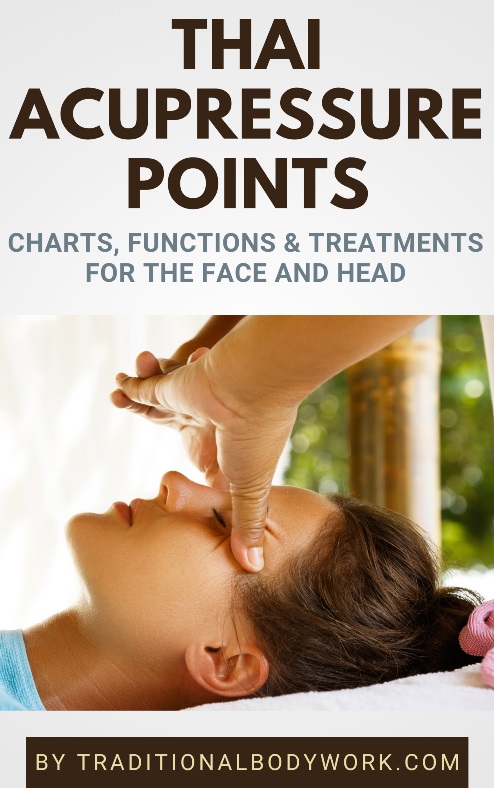
The indicated pressure points can be found around the mouth, being point H1 and point H2 as displayed in the acupressure chart further below. In addition, we’ll also discuss the Sen Sumana Endpoint, which is not visible in the chart because it’s located in the mouth at the tip of the tongue (or at the base of the tongue, depending on the Thai Massage lineage).
Although these three Thai Acupoints are used to treat physical health problems, they are also indicated for emotional issues that affect speech and vocal expression.
Mind that jaw problems can also affect the mouth physically or our vocal expression on an emotional level, but those are rather treated by Thai Acupressure Points around the ears or by treating the entire jawline with massage and acupressure.
At any rate, below you find the Thai acupressure chart of the face and head so that you can visually discern the locations of pressure points H1 and H2.

Pressure Point H1
Thai Massage
Point H1 is a single point located along the Sen Sumana Extension Line (S1-E) on the midline of the face at the indent between lower lip and the chin.
It can cure, alleviate, or counteract vomiting, constipation and slow digestion, dental pains, dry mouth, speech issues (loss of voice, hoarseness, swallowing problems), facial pain, facial paralysis, and facial numbness.
Ayurveda and Yoga
In Ayurveda and Yoga, this point is called the Hanu Marma and it’s located along Sushumna Nadi. Although it has more or less the same applications as in Thai Massage, it’s also indicated to resolve sexual dysfunctions and issues with the genital organs, alongside regulating hormones, emotions, and relieving stress.
Traditional Chinese Medicine (TCM)
In Chinese Acupuncture and Chinese Acupressure, this pressure point is called Chengjiang or Cheng Jiang (official WHO code CV-24), which is located along the Conception Vessel Meridian (Ren Mai).
As a whole, it has the same therapeutic indications as in Thai Massage, although it also adds mental disorders, and distortion of facial features to the treatment options.
Pressure Point H2
Thai Massage
Point H2 is a single point located along the Sen Sumana Extension Line (S1-E) on the midline of the face, and midway between upper lip and nose.
It’s a well-known and much used pressure point to battle unconsciousness, facial puffiness, fainting, fatigue, dizziness, apoplexy (cerebral stroke), coma, seizures (epilepsy), shock, trismus (restricted opening of the mouth), sunstroke, shortness of breath, and respiratory failure.
In Thailand, this point is sometimes called the “shock-point.”
Ayurveda and Yoga
In Ayurveda and Yoga, the H2 location is called Oshtha Marma and it’s located along Sushumna Nadi.
It shares various therapeutic indications with the corresponding Thai Acupressure Point, but it’s also indicated to resolve digestive issues, frontal headaches, facial paralysis, nose bleeds, mood and concentration issues, dental and gum problems, and speech disorders.
Traditional Chinese Medicine (TCM)
In TCM, this pressure point is called Renzhong or Ren Zhong (GV-26), which is located along the Governing Vessel Meridian (Du Mai).
As a whole, it has the same therapeutic indications as in Thai Massage, but also adds mental disorders, nosebleeds, and stiffness/pain of the back to the indications.
Sen Sumana Endpoint
Thai Massage
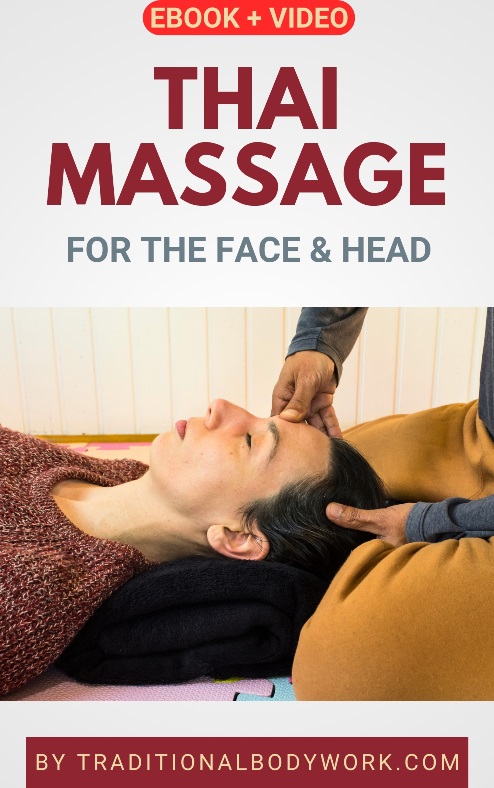
The Sen Sumana Endpoint is a single pressure point but not depicted in the chart because it’s actually located in the inside of the mouth.
As said at the start of this article, it’s thought to be at the tip of the tongue (or at the base of the tongue, depending on the Thai Massage lineage).
Nevertheless, in Thai Massage it’s manipulated as a pressure point, but then not on the inside but on the outside directly below the chin. Behind the u-shaped jawbone (immediately under the chin) you can find quite a substantial depression, which is the location of the associated reflex/pressure point.
The point is therapeutically indicated for throat and tongue problems, and (emotional) speech and vocal expression issues.
Ayurveda and Yoga
We’ve not found a corresponding Marma for the Sen Sumana Endpoint.
Traditional Chinese Medicine (TCM)
In TCM, this point seems to be associated with Lianquan or Lian Quan (CV-23 on the Conception Vessel Meridian).
The therapeutic indications include throat disorders, cough, tongue problems, speech issues, excessive drooling, dry mouth, hoarse voice, and difficulties with swallowing.



